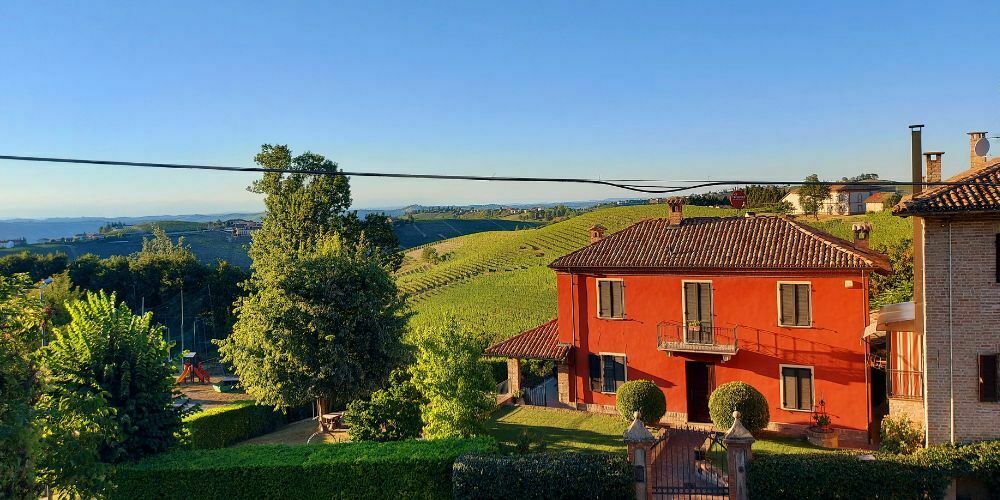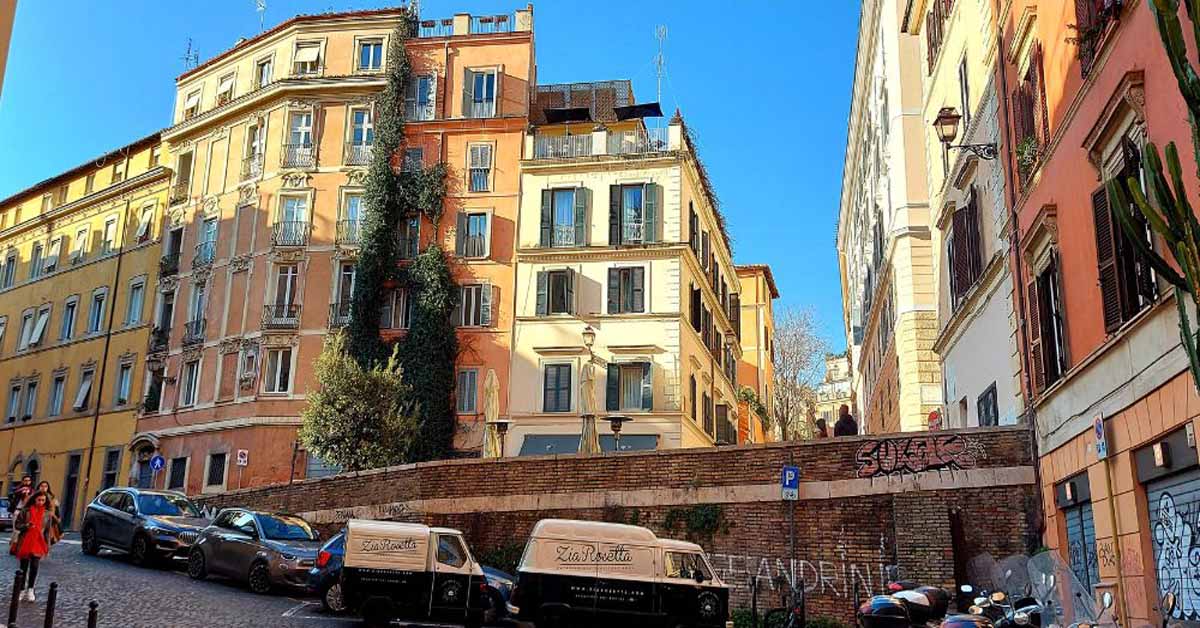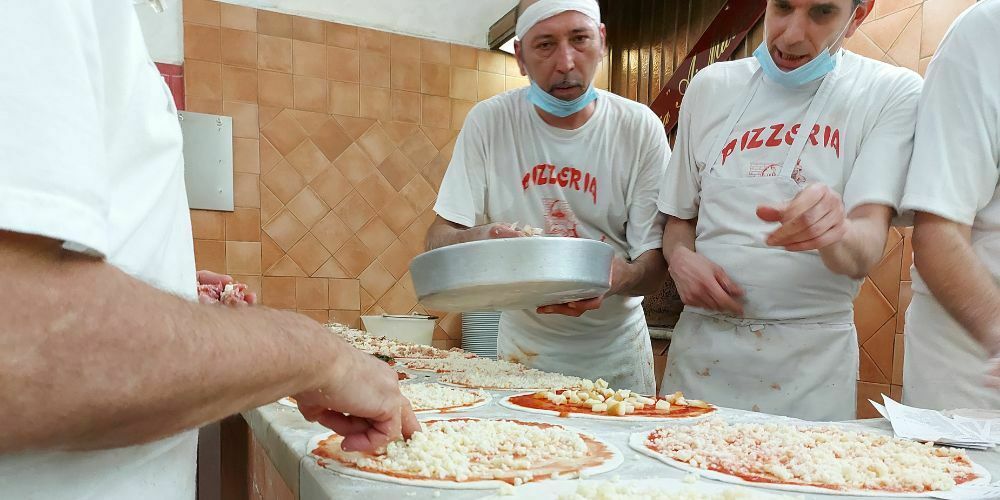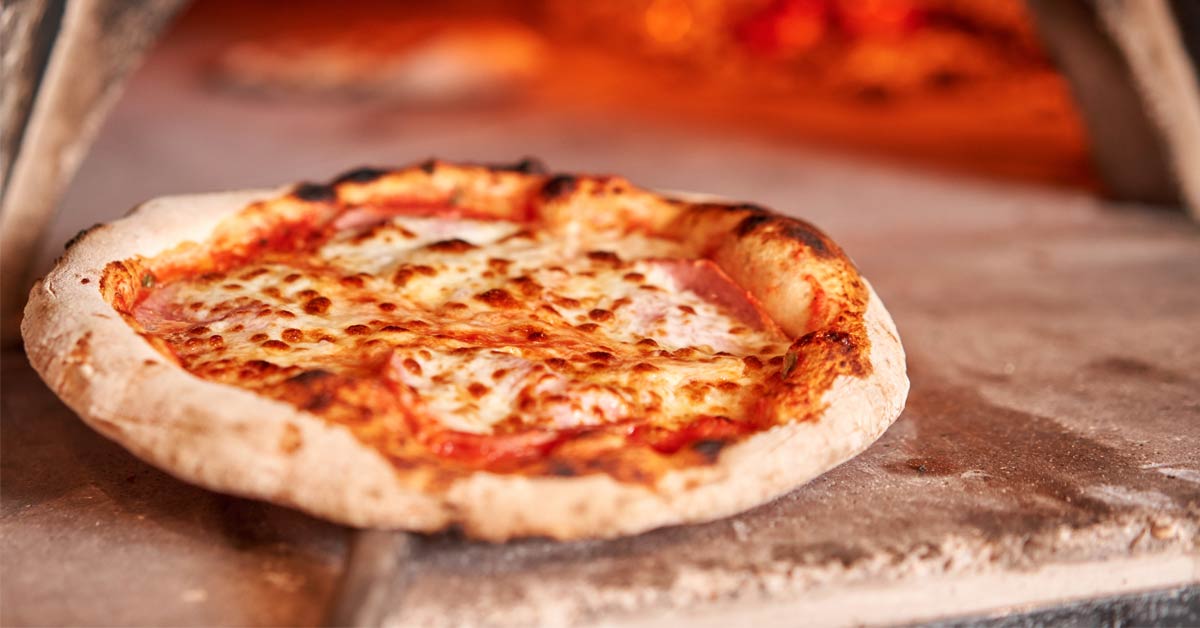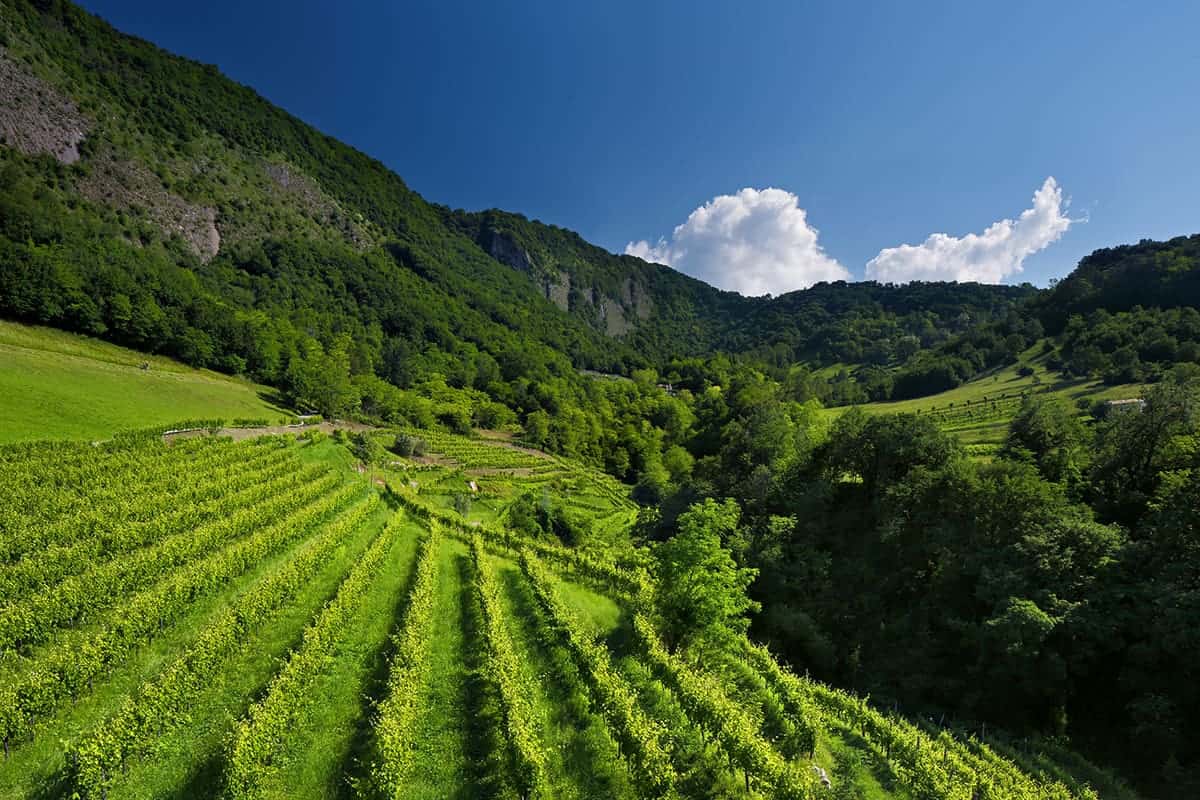Due to a favorable price per hectare (acre), more and more Italian farmers are switching to planting hazelnuts. This is due to the popularity of Nutella and the Nutella logo.
A hum is heard from behind a row of hazel trees. Then a farming machine emerges into the field of vision, a kind of oversized vacuum cleaner on four wheels and with a cab on top. At the front of the machine are two large rotating discs that look like the scrapers of one of those sweeping machines that clean the streets in big cities.
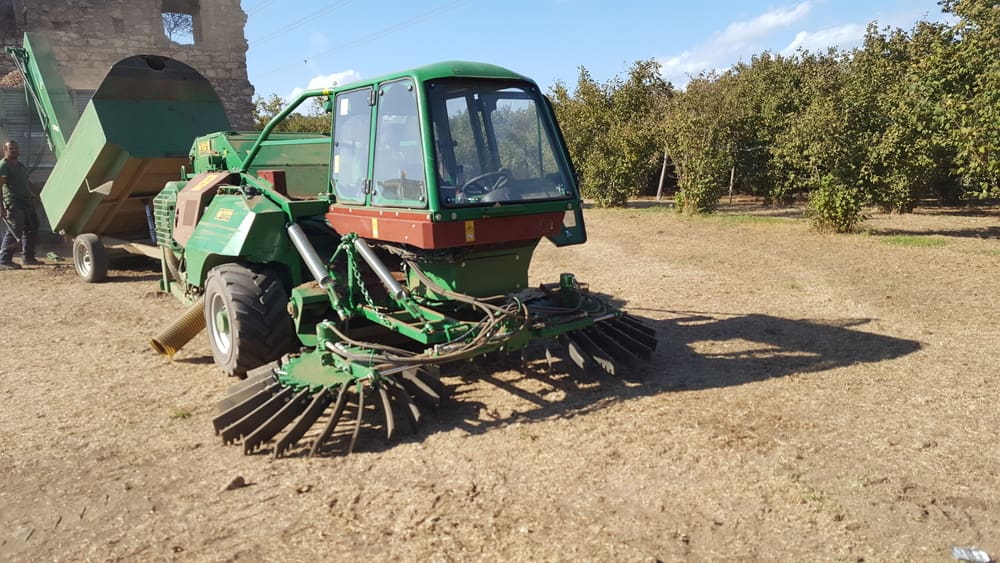
The scrapers make circular movements over the ground, sweeping hazelnuts to the center of the path. A large piston mounted on the machine then swallows the fruit. It is done extremely quickly. Within twenty seconds, the operator has finished the soil around five plants. In this way, one person can bring in the entire harvest.
Hope: The Autobiography
By Pope Francis
New York Times bestseller
First autobiography by a Pope
A vivid memory…
Get offer at Amazon.comFrom a distance, Valerio Cristofori observes. “Mechanization is the only way to stay ahead of the competition,” says the professor of Agricultural and Forestry Sciences at the University of Viterbo, 80 kilometers north of Rome. Until the early 1980s, it was women who manually brought in the harvest. Cristofori can still remember how the women put the fruit in their aprons. That’s how it’s still done in large parts of Turkey, the rival of Italian hazelnut producers.
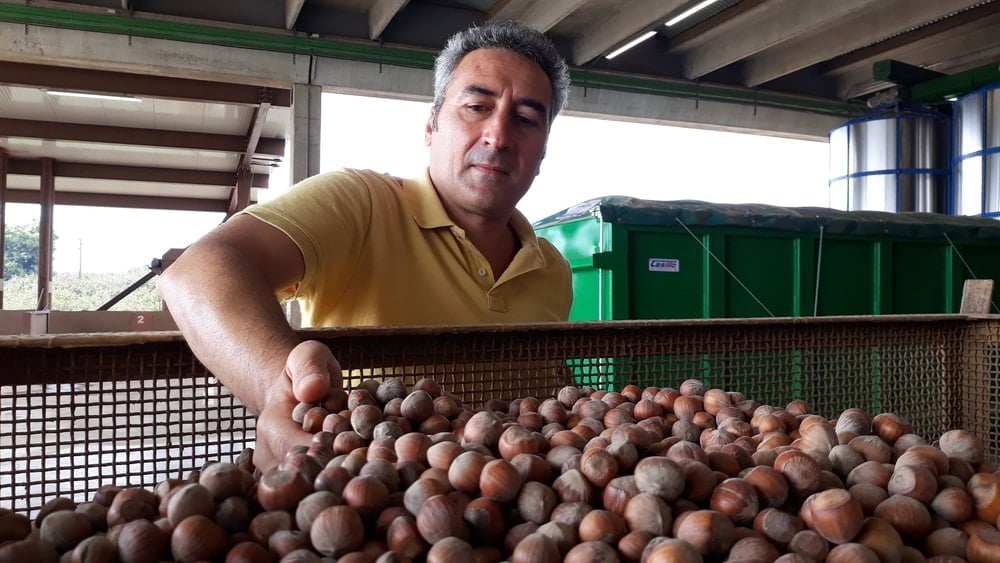
Ten years ago, the field where the ‘vacuum cleaner’ now drives wheat was cultivated. Farmers in the province of Viterbo have switched en masse to growing hazels in recent years. The reason is that the market for hazelnuts is on the rise (read more in ‘Epilogue’, here below). And it has been that way for years. But switching is not a decision you make overnight. Before a hazel bears its first fruit, five years pass.
Viterbo hazel farming
Romeo Stelliferi is the largest hazel farmer in the province of Viterbo. Moreover, he is also one of the most important hazel growers in the world. Stelliferi rarely stands in the clay anymore. Wearing a spotless white shirt, beige trousers and suede shoes, shows me young plantings as he is walking past a field.
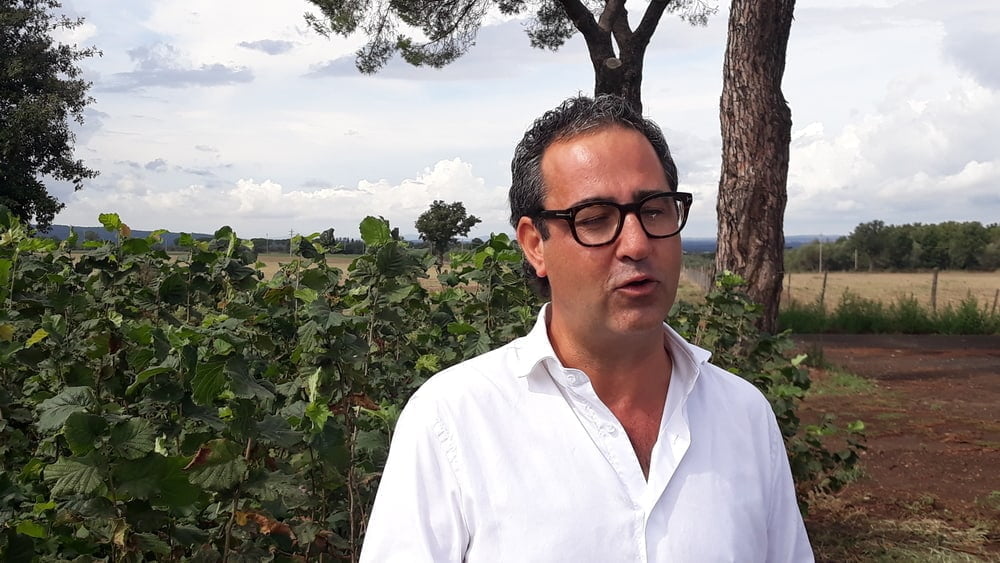
“These plants were transferred as cuttings from the mother field. Here they remain for one to two years, so that they strengthen and continue to grow. Between November and March of the second year they are sold. This is the period after the harvest in September. Then the plants are less stressed when they are transferred”, says Stelliferi. The entrepreneur sells half a million hazels annually at home and abroad.
Strong plant
Once the hazel is in its new and final home, it takes another three years before it produces fruit. The bushy plant is then about four feet tall. Hazels have a long life. They can live up to eighty years. Stelliferi says he also has one that is 100 years old. That must have been one of the first to be planted in the area north of Rome. In 1920, the production of hazels in the province of Viterbo began. Today, almost 20,000 hectares have been planted with it. In the coming years, 5,000 hectares will be added.
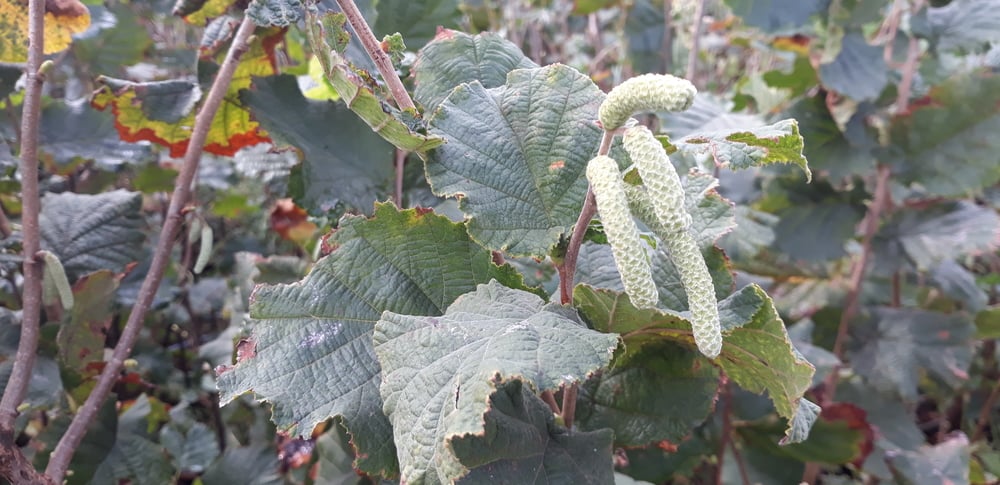
“Because personnel costs are high, many growers in the province of Viterbo invest in machinery. Not for nothing does the province have a small but solid export of agricultural machinery that specializes in pruning, planting and harvesting walnut trees, among other things”, says Danilo Monarca, Cristofori’s colleague and senior lecturer in agricultural engineering. For example, the ‘vacuum cleaner’, or self-propelled harvester, is an invention of a manufacturer in Vitorchiano (8 kilometers from Viterbo) that delivers its agricultural machines around the world.
RELATED: Read more about the fascinating area around Viterbo and get ideas for a getaway when visiting Rome
The good fortune of the hazelnut is that the harvest is not so much a matter of picking (as with fruit and olives), but collecting from the ground. This is less labor intensive. The vast majority of the nuts fall spontaneously. But the nuts should not be left on the ground too long. They tend to absorb moisture and that does not benefit the quality of the fruit. To prevent this, the ‘vacuum cleaner’ is used to harvest more frequently, sometimes once every ten days.
Local cooperative
The mechanization does not stop after the harvest. In the local cooperative (180 members) in Ronciglione (22 kilometers from Viterbo) loads of hazelnuts arrive daily in September, which are automatically separated from plant residues by machines. The nuts are then dried in huge metal silos – type centrifuges.
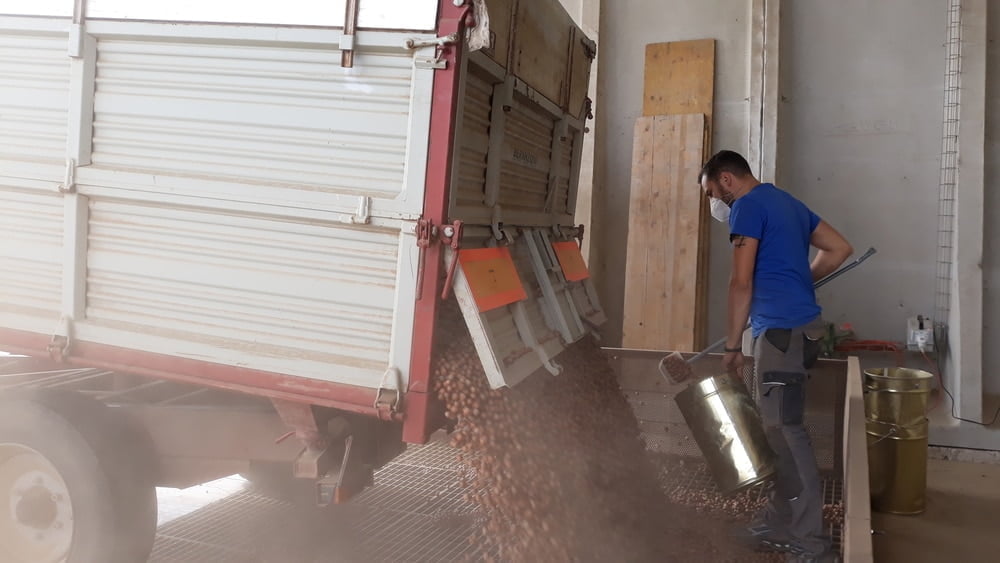
The hazelnuts from this area are of the autochthonous variety ‘Tonda Gentile Romana’, which, as the name indicates, are round (‘tonda’) and have a fairly large diameter. The hazelnuts go mainly to large confectionary producers as hazelnut paste and as an ingredient of hazelnut and chocolate mixes.
That it can also be done differently can be seen at the small-scale hazelnut and chocolate maker Cimina, one of the few local producers. In a small laboratory in Capranica (20 kilometers from Viterbo), three female employees mix liquid hazelnut paste and chocolate in molds. At the end of the process, thick slices are carefully wrapped by hand as if they were gifts. And given the price, perhaps that’s justifiable.

The popularity of the hazel has led to monoculture in parts of the province of Viterbo. “The negative effects of monoculture are minimal in the case of the hazel”, Cristofori opines. Hazel cultivation is not intensive agriculture, as a maximum of 500 trees per hectare are planted. The plant needs that free space, about twenty square meters, to thrive.
Monoculture
Olive trees, on the other hand, are nowadays planted much closer together. In Spain, olive cultivation has been rationalized to the point where as many as 4,000 trees are planted per hectare, Cristofori says. The dense hazel shrub absorbs a relatively large amount of carbon dioxide from the atmosphere. This is good for the environment.
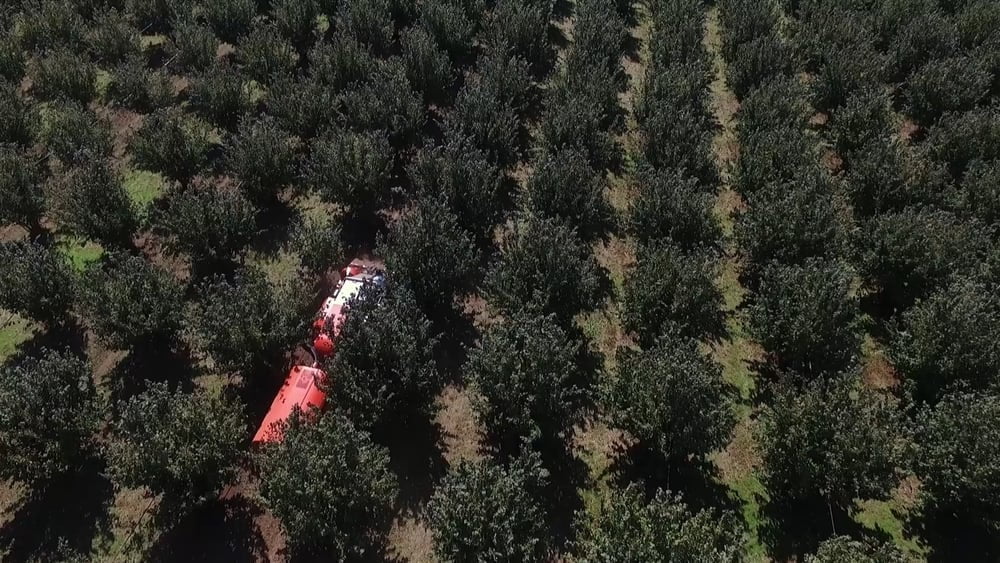
The hazel not only has admirers, such as Cristofori and Nutella logo lovers, but also enemies, notably the brown-marbled shield bug. The hazelnut borer also offers tough opposition. Little imagination is needed for how that insect operates: the female lays an egg in the hazelnut when the pericarp is still soft. When the larva has feasted on the pulp, it bores out through the now woody wall. The result is literally an empty shell.
Epilogue: Italian hazelnut
Italian agriculture is not only synonymous with wine grapes and olives. The hazelnut also belongs to Italy. Not for nothing does its scientific name, corylus avellana, refer to the city of Avella, near Naples. Pliny the Elder used a similar name (Avellana nux sylvestris or “wild nut from Avella”) in Naturalis Historia, his famous work from the first century AD.

Hazelnuts were popular in ancient times, and are so again today. This has to do with, among other things, the nut’s nutritional value (vitamin E), but also with Pietro Ferrero. This man invented Nutella almost 60 years ago. Since then, the world has been crazy about hazelnut spread. Today, no less than a quarter of the world’s production finds its way to Alba (near Turin), where Ferrero has its headquarters.
According to the International nut and dried fruit council, the main umbrella organization of this sector, world production in 2019 reached over 500,000 tons of hazelnut (without shell), an increase of 60 percent in ten years. The largest producer with 70 percent is Turkey, followed by Italy (11%), Azerbaijan (5%), Georgia (4%) and the United States (3%).
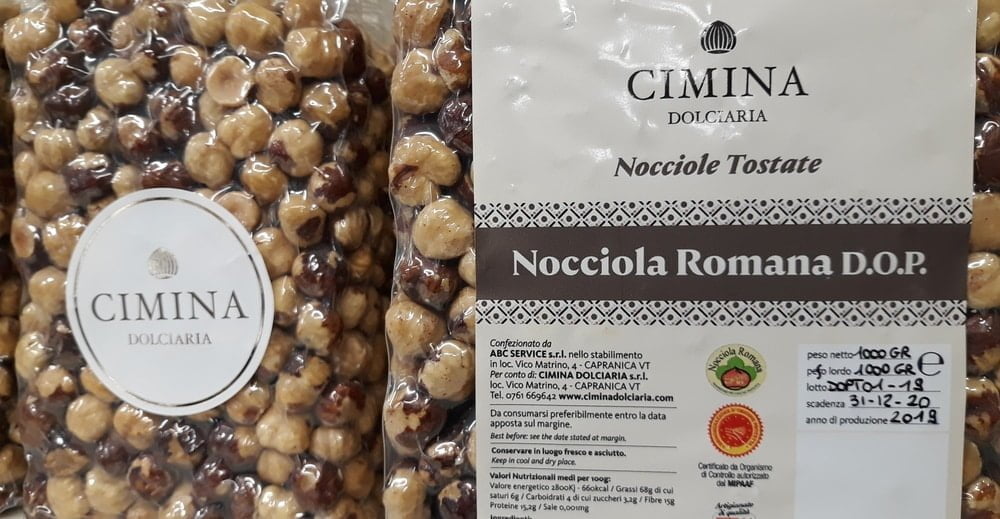
The demand for hazelnut has led to a significant increase in the area under hazelnut cultivation in Italy (and especially around Viterbo). This is partly due to the influence of Ferrero, which has drawn up a plan whereby the area in Italy should be increased by 30,000 hectares in the coming years.
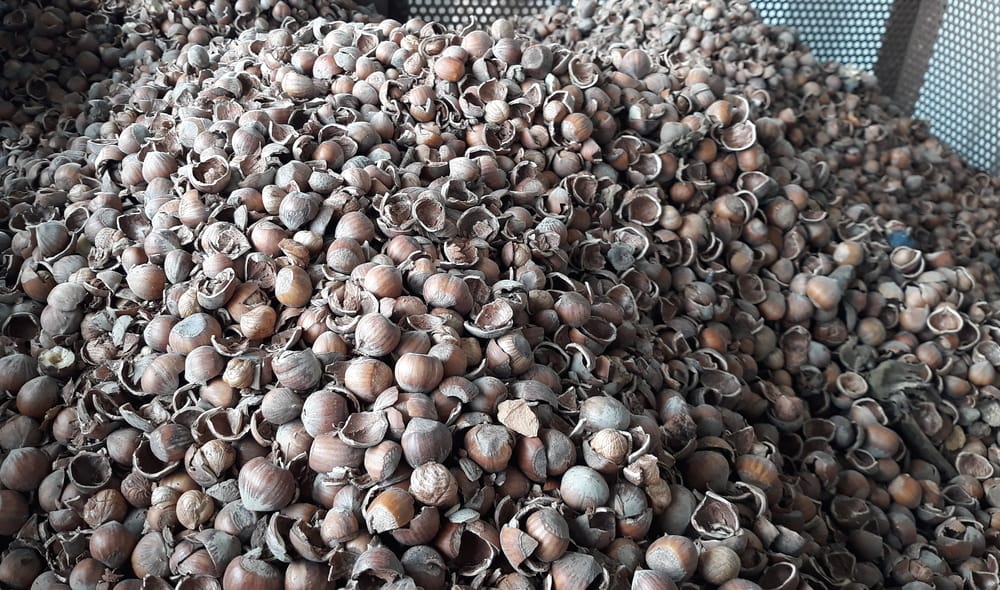
A major incentive to start growing hazelnuts is the price per quintal. That is a lot higher than other crops. “The price is measured by the yield of the nut without the shell. The yield has a factor that varies between about 0.4 and 0.5,” says Professor Cristofori.
The math is quick. With a yield of 0.4 and a kilogram price of 6.20 euros, as it currently stands, 100 kilograms of quality hazelnuts (without shell) yield 248 euros. On average, one hectare of hazelnut trees yields 2.5 tons of hazelnuts. The total yield per hectare is therefore around 6,000 euros. Cristofori also calculates that the cost (personnel, fertilizer, pesticides, depreciation of machinery, cooperative participation) is about 2500 euros per hectare. Scale works strongly in favor. From 20 hectares, the costs of personnel and machinery are significantly reduced.
Epilogue II: More on Nutella
Italians are the inventors of the radio, the telephone, the newspaper and the bank. But perhaps their most famous invention is the spreadable hazelnut spread.
At the end of World War II, the country was short of chocolate and other raw materials. Pietro Ferrero, a confectioner from Alba (Piedmont), got the idea of mixing hazelnuts with a little cocoa powder as an alternative. There was no shortage of hazelnuts in Piedmont. The product could be cut into slices, among other things, to put on bread.
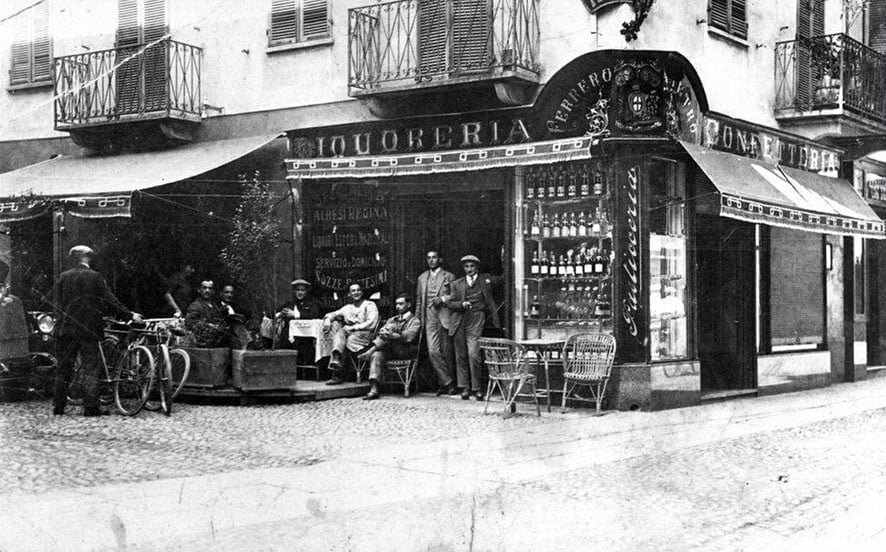
The first spreadable version (vegetable oil was added) came out a few years later under the name ‘Supercrema’. Under Pietro’s son Michele (1925-2015) the recipe would conquer the world. From now on, the cream was packaged in recognizable oval jars with a round lid. In 1964 ‘Supercrema’ got its final name: Nutella.
The substance became so successful that today Ferrero buys a quarter of the world’s hazelnut supply. Even though Italy is the second largest producer of hazelnut worldwide, the yield is not enough to fill the 450 million jars of Nutella worldwide. That is why the hazelnuts now mainly come from Turkey. This is criticized because the working conditions in that country are far from optimal, and Ferrero would profit from that. There is also criticism that Ferrero would promote monoculture (of the hazelnut).
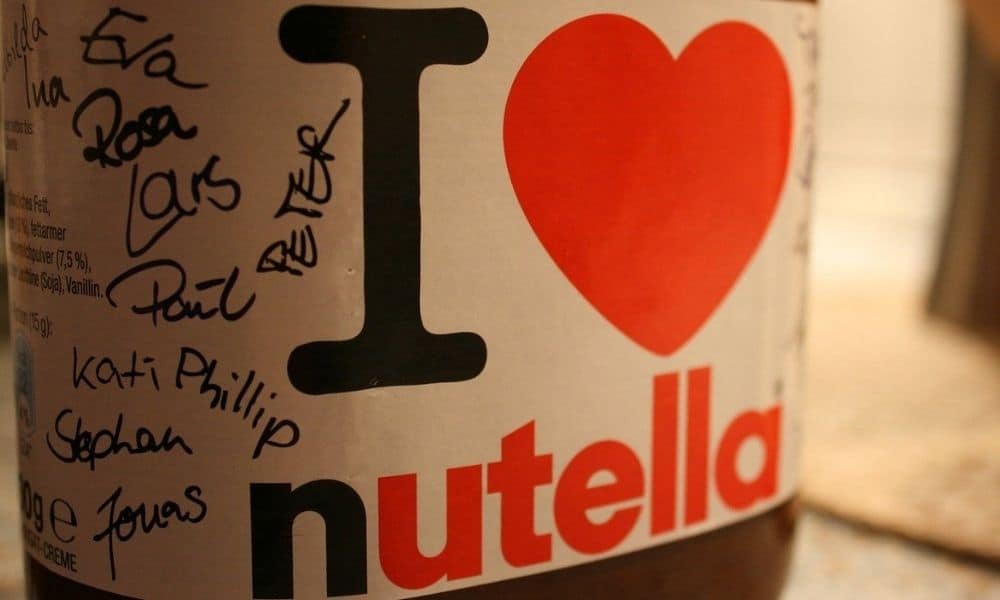
Ferrero is not only behind Nutella. In 1974, Ferrero introduced the Children’s Surprise Egg. The product is nothing more than a toy wrapped in a surrogate chocolate capsule. But the egg has enormous appeal to children, hence the name. ‘Kinder’ (‘children’) has become possibly the most famous German word in the world thanks to Ferrero. Indeed, the brand retains its original name in almost all countries (Germany was Ferrero’s main market at the time).
Other famous brands from Ferrero’s stable include Mon Chéri, Ferrero Rocher and TicTac. Two years ago, Ferrero introduced Nutella Biscuits, which was an immediate success. Within a month, 2.7 million packs went on sale in Italy. In 2020, Ferrero’s holding company turned over 12,3 billion euros. Profits rose to 928 million euros (2019).
RELATED STORY: Ferrero is an Italian icon. Read more about famous Italian brands.


